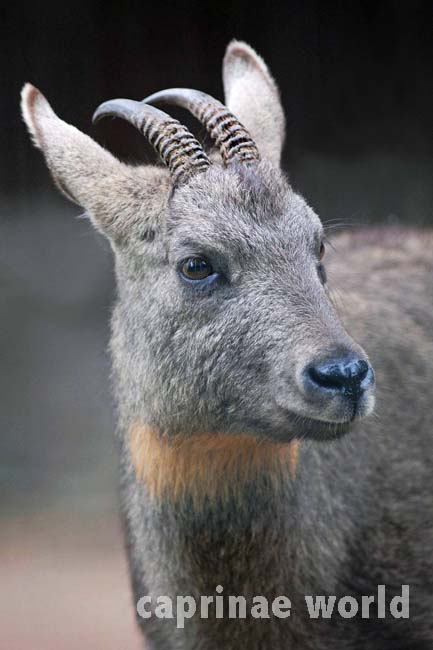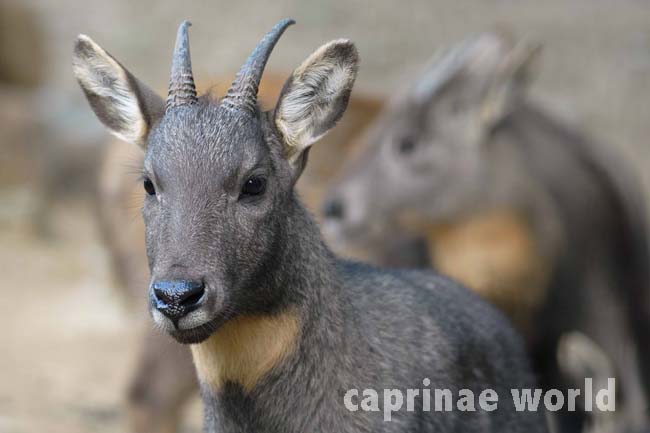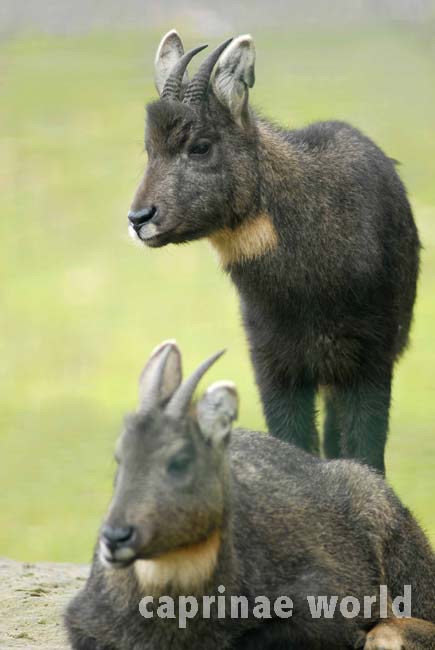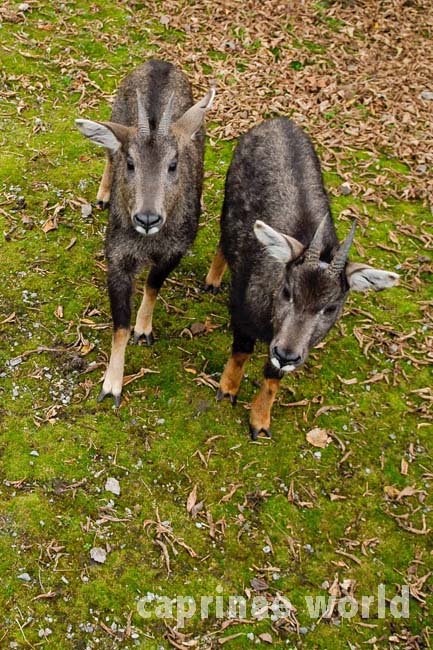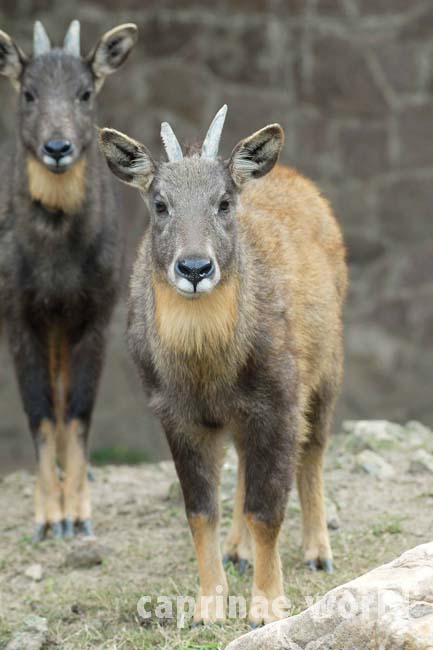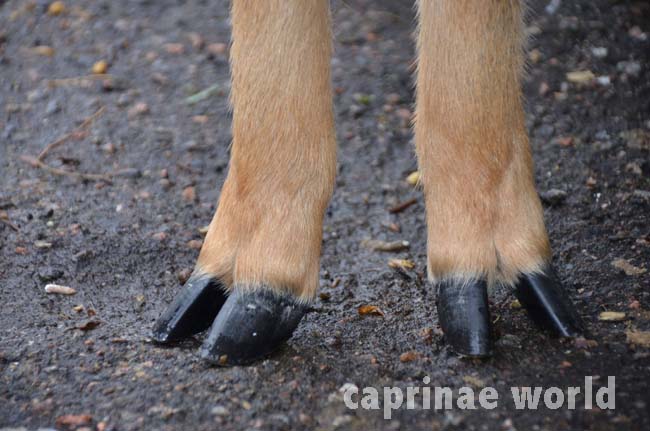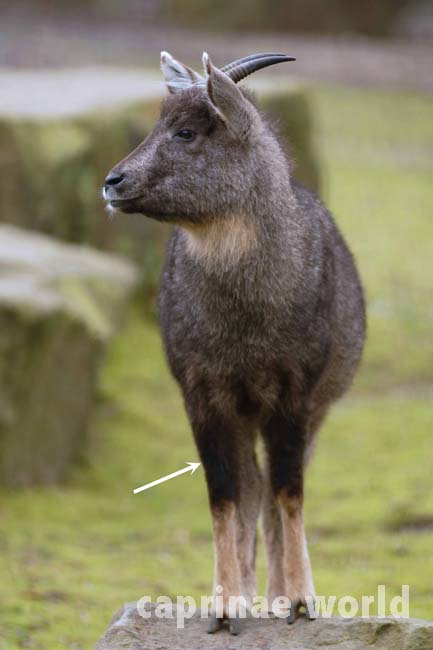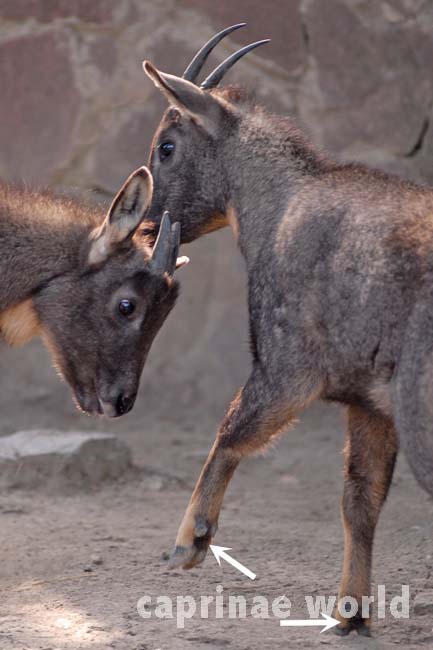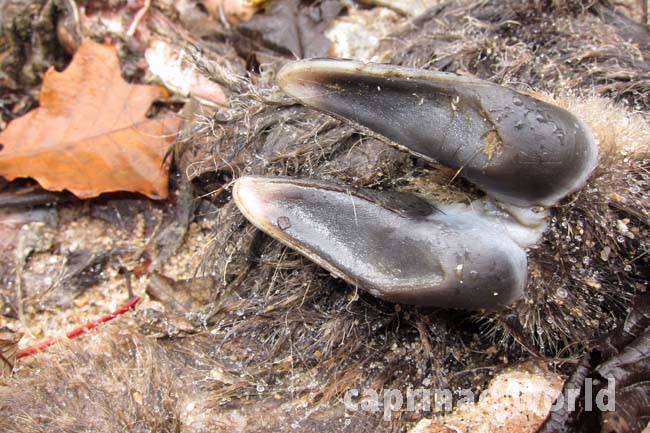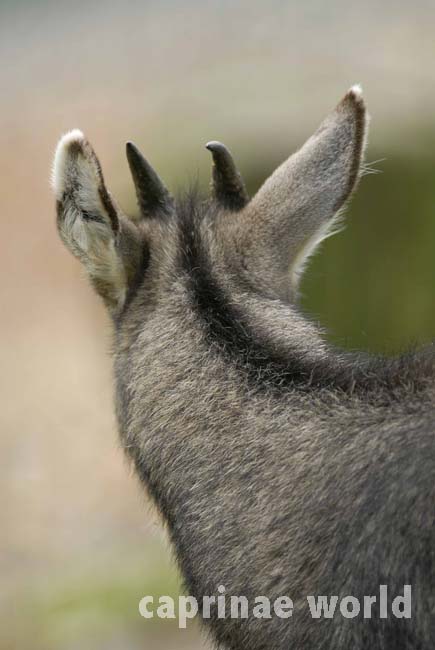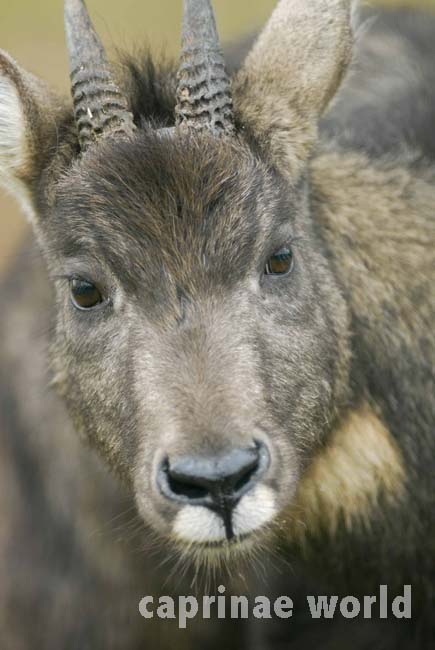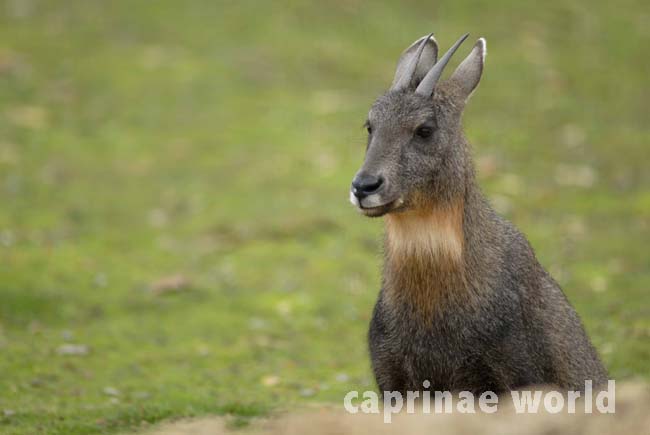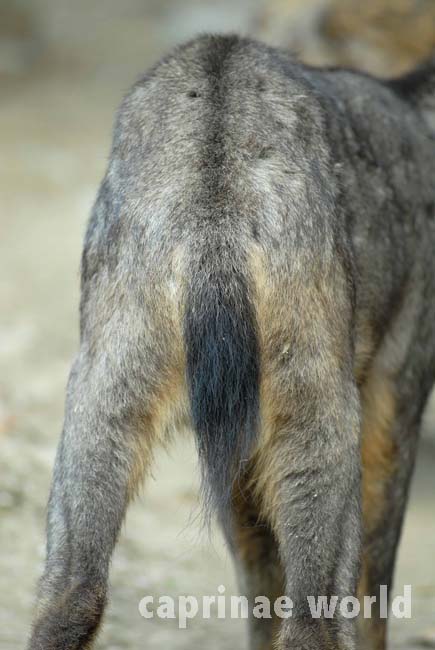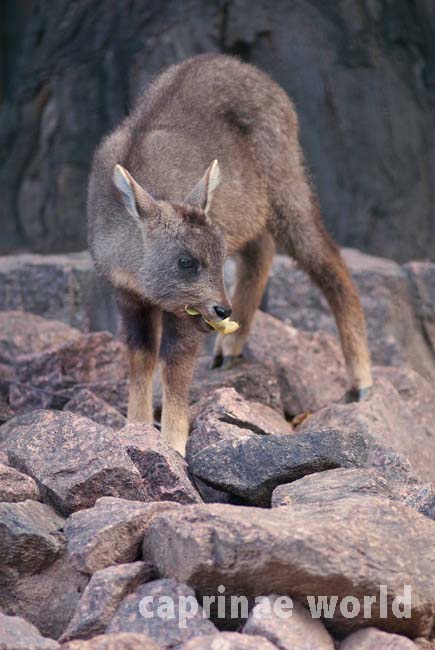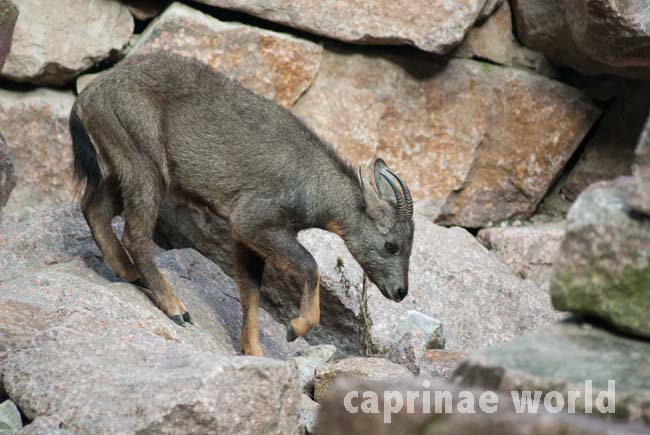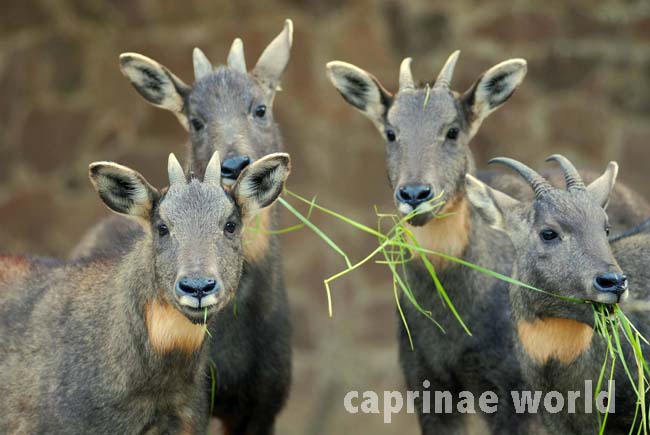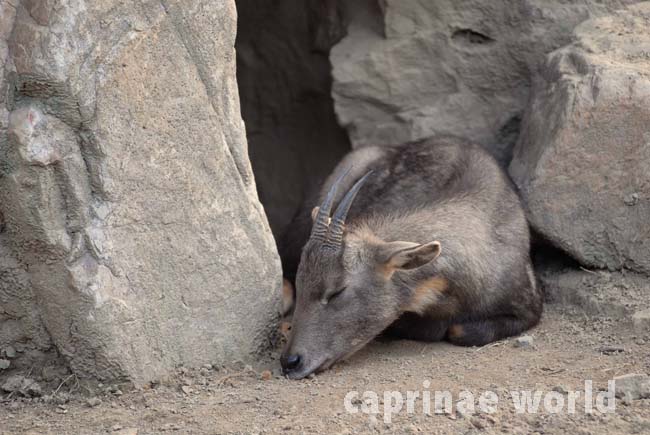You could call the Chinese Goral an Oxymoron: Of all the goral species it has the widest distribution, but yet its range is restricted to just one country.
Names / Taxonomy
| English common names: Chinese Goral (3), Gray Long-tailed Goral, Southern Long-tailed Goral (1), Gray Goral (5), Central Chinese Goral (5) |
| Chinese: 華南山羚, huà nán shān líng (1) |
| Czech: goral sečuánský (6) |
| French: Goral gris (3), Goral chinois (5), Goral gris à queue longue (1) |
| German: Chinesischer Goral (5), Westchina-Goral (3), Grauer Langschwanz-Goral (1) |
| Russian: Китайский горал (wikipedia) |
| Spanish: Goral chino (5), Goral de China (3), Goral gris de cola larga (1) |
Naemorhedus griseus Milne-Edwards, 1871, Type locality: China (Sichuan) (3)
The generic name was originally spelled Naemorhedus, but the spelling Nemorhaedus, despite being an unjustified emendation, is in „prevailing“ usage and is used here as well. (3)
Subspecies
The Chinese Goral was previously classified as a subspecies of N. goral. (3) Since then numerous descriptions of Chinese gorals have been made (Table 1) (4). Only one is valid today. – At last the name N. griseus included N. evansi (Burmese Goral), and N. griseus as subspecies. (5) Many authors consider them full species today (3, 4, 5, 6).
Table 1: Other (Putative) Scientific Names and Synonyms
| 1871 Nemorhedus griseus Milne-Edwards. Moupin, Sichuan |
| 1874 Antilope (Nemorhedus) cinerea Milne-Edwards. Moupin, Sichuan |
| 1888 Kemas arnouxianus Heude. Jixien, Zhejiang |
| 1890 Kemas henryanus Heude. Ichang, Hubei |
| 1894 Kemas aldridgeanus Heude. Yitchang, Hubei |
| 1894 Kemas fantozatianus Heude. Mountains of Kiuntscheou, right bank of the Middle Han River, Hubei. |
| 1894 Kemas iodinus Heude. East Sichuan |
| 1894 Kemas niger, Kemas fargesianus, Kemas initialis, and Kemas versicolor Heude. Chenkouting, Sichuan |
| 1894 Kemas vidianus and Kemas galeanus Heude. Yu Ho Mountains, South Shaanxi |
| 1894 Kemas xanthodeiros and Kemas pinchonianus Heude. West Sichuan |
On the other hand there is no doubt that there is some degree of variation for example in pelage coloration throughout the range. For example the gorals of southeastern China, formerly known as henryanus and arnouxianus, apparently have a darker brown tone to the body pelage. (1)
Distribution
The Chinese Goral is endemic to China (6) – orruring in central, Southeastern and southwestern parts of the country (Northeast Sichuan to Shanxi, Henan, Hubei, and East to Fujian, Yunnan – Lijiang, (3) and the eastern margins of the Tibetan Plateau (1).
General description
| length / head-body: 80-120 cm (3); 82-130 cm (1) |
| shoulder height: 50-70 cm (3); 50-78 cm (1) |
| weight: 20-30 kg (3); males: 28-42 kg (1) |
| tail: 8-20 cm (3); 13 cm (1) |
| horn length: rarely exceed 20 cm (1) – (see also entry below) |
| Diploid chromosome numbers: 55 und 56 (3) |
| lifespan (in captivity): 22 years |
Table 2: Description of some pelage characteristics
Coat colour of young
In general corresponds to the adults; they are light grey with cream-coloured distal parts of the limbs. The nuchal and dorsal stripe, compared to the adult animals, is lighter – light grey-brown. The young have a quite conspicuous dark brown crest on the crown of the head. (6)
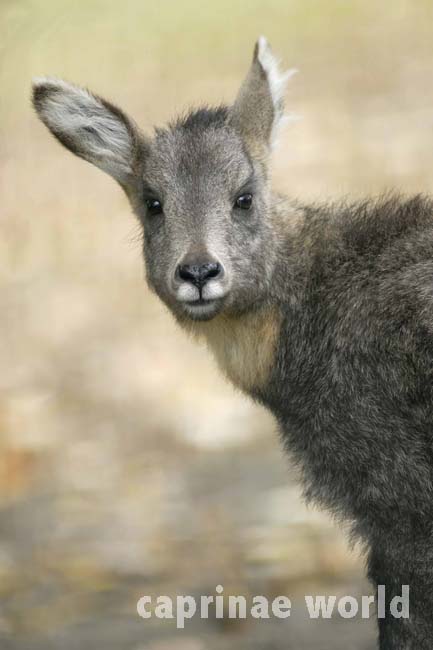
Young goral have a conspicuous dark brown crest on the crown of the head, which is almost gone in this young Chinese Goral.
Horns
The black conical horns are curved and sharply pointed (1), but hardly downturned (4). Horns of rams are generally longer than those of females. While Damm and Franco (2014) belief that horn length probably rarely exceed 20 cm, Hrabina (2015) states that they are often longer than 20 cm and distinctly thick (6). At base and lower third the horns show distinct irregular rings (1), which tend to be more prominent than in the Himalayan gorals. (4) Ribbing is deep and conspicuous, the number of grooves rarely drops below 10. (6)
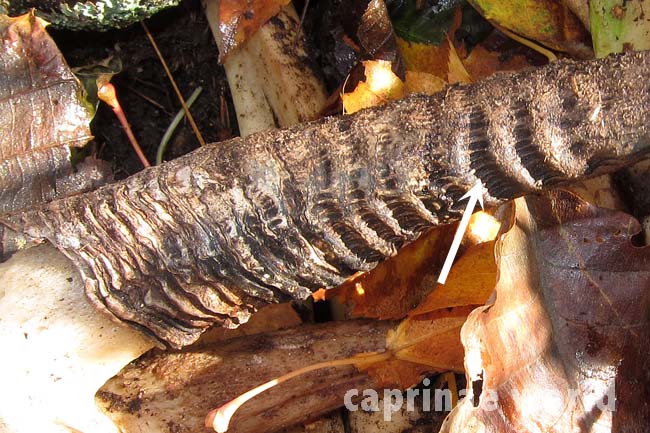
The annual grooves in this Chinese Goral horn from Foping Nature Reserve, China, show an interesting pattern: The grooves are multi-partitioned through vertical aligned lamellae (arrow) made of horn material.
Similar species
The Chinese Goral (N. griseus) is bigger than the Burmese Goral (N. evansi). Regarding the pelage, each individual hair of the Chinese goral is „almost uniform“, whereas the pelage of the Burmese Goral is „light grey with disseminated darker brown-grey hairs, which somewhat darken the overall tone“. In comparison with the Burmese goral, the grey-brown nuchal stripe as well as the dorsal stripe is thinner. (6) The Chinese Goral differs from the Himalayan gorals by usually having a longer coat and a long tuffted tail (5), a deeper scull (4) and furthermore by apparently having more prominent horn rings. (4) The Chinese Goral differs from the Long-tailed Goral by having more black fur on its tail and more contrast between the color of lower legs and body.

Chinese Goral (left) and Gray Himalayan Goral: The Chinese Goral differs from the Himalayan gorals by having a deeper scull and more prominent horn rings.
Habitat
The Chinese Goral occurs at elevations of 1000-4000 m. (3) They inhabit steep, rocky terrain and plateaus in mountainous areas, and sometimes subtropical mixed forests and deciduous forests near cliffs, but primarily stays within rugged rocky terrain. (1)
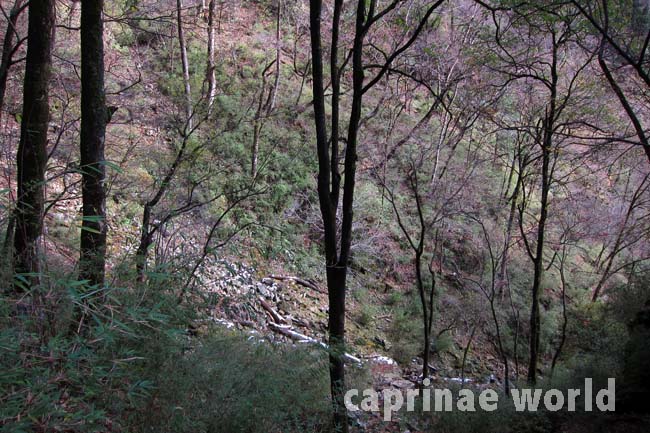
Goral habitat in open, deciduous forest adjacent to cliffs (not shown) in Foping Nature Reserve, China.
Mortality / Predators
Dhole, leopard, lynx, tiger (5)
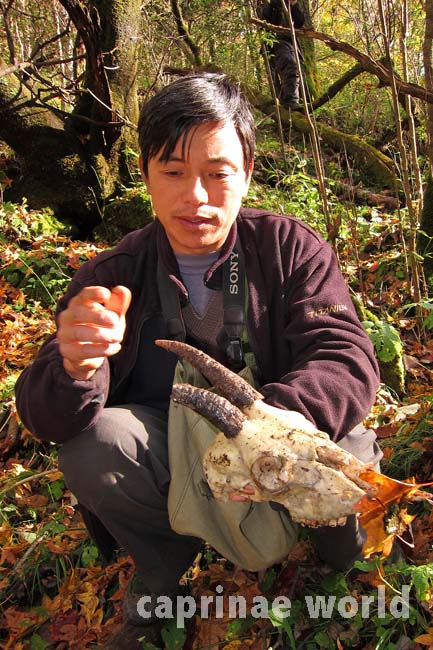
Scull of an old Chinese Goral (presumably more than 15 years) found at Foping Nature Reserve, China. A captive goral is known to have lived 22 years.
Food and feeding
Chinese Gorals probably feed primarily on grasses (3); the diet consists further of leaves, twigs and nuts. (1)
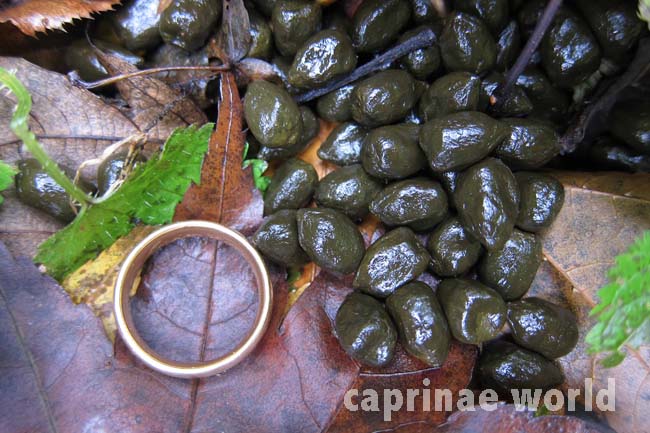
Fresh dung of Chinese Goral in Foping Nature Reserve. Ring Ø: 2 cm. (Identification through local guide, not confirmed otherwise)
Breeding
| Sexual maturity reached: at 1,5 years |
| Gestation: 180 days (3) |
| Young per birth: only a single young, twins are rare (3) |
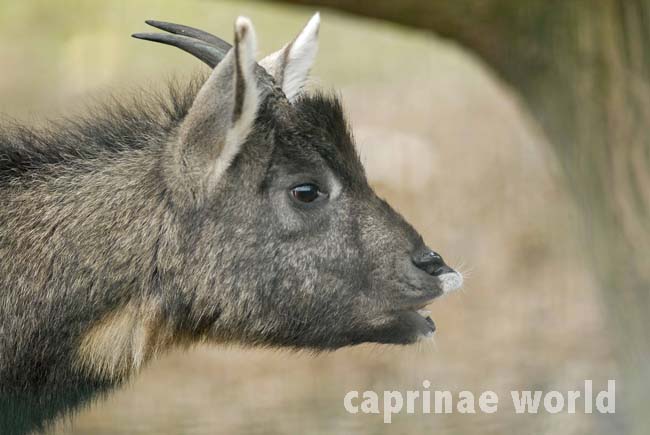
Chinese Goral in flehming position: inhaling with curled back upper lip and exposing front teeth. Flehming facilitates the transfer of pheromones and other scents into the vomeronasal organ (VNO) located above the roof of the mouth.
Activity patterns
likely crepuscular, based on what is known about other gorals. (3)
Movements, home range and social organisation
The Chinese Goral is seen in small groups, rarely of more than 10 individuals (3) / with 4 to 12 individuals (1). Older males are probably solitary. (1, 3)
Conservation Status / threats
According to IUCN the Chinese Goral is classified as vulnerable. (2) In China they are frequently hunted or snared by local people for meat, fur and medicine (1), also for illegal commercial markets. Habitat loss due to forest destruction and unsustainable livestock grazing coninue to fragment and deleteriously impact goral populations. (3) Protection is less than effective because local people are mostly ignorant of the legislation. (1)
Trophy hunting
No entries found. Most probably there is no opportunity for foreign hunters to hunt Chinese Goral currently.
Ecotourism
Travellers have reported seeing Chinese Goral at Tangjiahe Nature Reserve and Labahe National Park, Sichuan, China. (7)
Literature Cited
(1) Damm, Gerhard R. and Franco, Nicolás, 2014: The CIC Caprinae Atlas of the World – CIC International Council for Game and Wildlife Conservation, Budakeszi, Hungary in cooperation with Rowland Ward Publications RSA (Pty) Ltd., Johannesburg, South Africa.
(2) Duckworth, J.W., Steinmetz, R. & Rattanawat Chaiyarat. 2008. Naemorhedus griseus. The IUCN Red List of Threatened Species 2008: e.T14303A4430834. http://dx.doi.org/10.2305/IUCN.UK.2008.RLTS.T14303A4430834.en. Downloaded on 06 February 2017.
(3) Wilson, D.E. and Mittermeier, R.A. [eds], 2011: Handbook of the Mammals of the World. Vol. 2. Hoofed Mammals. Lynx Edicions, Barcelona.
(4) Groves, Colin and Grubb, Peter, 2011: Ungulate Taxonomy. The John Hopkins University Press.
(5) Castelló, José R., 2016: Bovids of the World – Antelopes, Gazelles, Cattle, Goats, Sheep, and Relatives. Princton University Press.
(6) Hrabina, Petr: „A new insight into the taxonomy and zoogeography of recent species of goral (Nemorhaedus, Bovidae, Ruminantia)“, Gazella 42, 2015, Zoo Praha
(7) http://www.mammalwatching.com/places/china/
